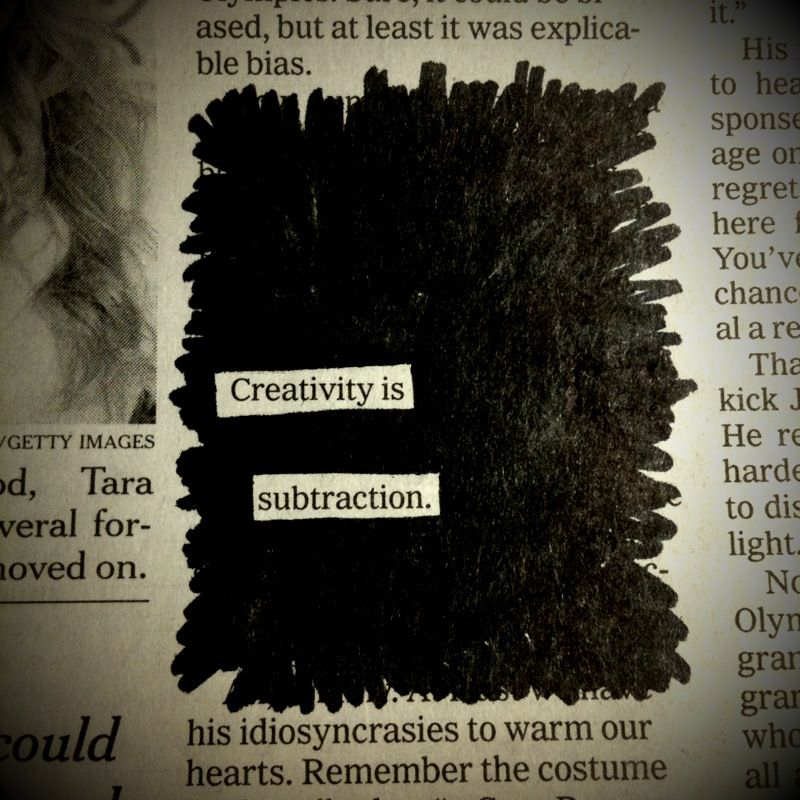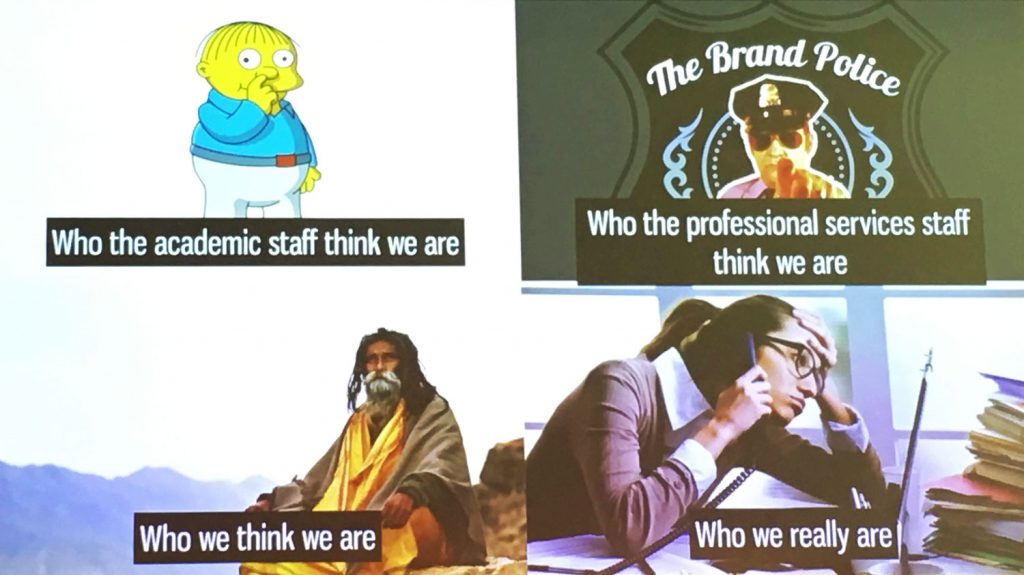Making the user experience seamless for students is a challenge at Kent. This is both for online and offline services.
And it needs to be done in an unpredictable environment.
How do we stay fresh and keep up to date with the innovations that students expect from a modern institution and a connected world?
At the conference, the call for creativity, innovation and the need for underpinning governance resonated with me. Here are some highlights.
Inspiring content
[Picture: Creativity is subtraction by Austin Kleon. CC BY-NC-ND 2.0 ]
The opening keynote was about waking up your creativity to shift your perceptions and see things differently.
Austin Kleon (author of How to steal like an artist) asked how we are to inspire our audiences if we do not pursue creativity, compassion and curiosity ourselves?
“The only art I’ll ever study is stuff I can steal from.”
David Bowie
He encourages us to ‘steal’ from other artists. Good stealing is not about plagiarising, but understanding the process and ideas of other great people. Use great ideas to to stir up your creativity to make something new.
Creative solutions to content are necessary to keep up with expectations that our students have. This is especially evident during competitive times, like clearing.
Dougal Scaife (Head of Digital Experience & Engagement, Leeds Beckett University) developed an AI chatbot, Becky, to help support clearing queries.
Becky allowed applicants to explore courses and receive provisional offers without waiting for phone lines. They had a clear understanding of their audience (generation z) who were familiar with this sort of channel.
They gained huge amount of free exposure from the media and logged 21,173 conversation via their chatbot. Being trailblazers paid off – 11% increase in clearing recruitment for 2017 and ROI of £2.4m in tuition fees.
They are now looking toward using voice recognition AI services.
Inclusive content
[Picture: ContentEd presentation screenshot by Sarah Richards, Content Design London. ]
Sarah Richards (author of Content design) gave a powerful talk about how accessibility is usability. She gave an overview of how different people struggle with content due to different needs.
Accessibility is not only about code and colours for techies. For editors, well-written and -structured content is fundamental to accessibility.
Accessibility was a common thread throughout the conference – good content is accessible content.
A breakout session about Design Thinking was a reminder about the importance of understanding needs and motivations as a foundation to solving design problems.
Design Thinking keeps the user at the centre of your decision making. It follows an iterative process of empathising (researching users), defining the problem, coming up with multiple ideas, prototyping, and testing.
Efficient content
Richard Prowse (Deputy Director of Service Design, University of Bath) gave an excellent workshop on Service design.
Interactions over time are perceived as a single experience.
It doesn’t matter if someone is an applicant, fresher or graduate… their experience of the university should feel connected. We should always deliver a great experience.
This relates to both the physical and digital worlds for any service that helps someone complete a goal. To achieve this, governance and workflow is vital.
You may improve the frontend in both physical and digital contexts, but if the backend systems (human and technical) are not in sync, it undermines the experience, regardless of how polished the frontend may appear.
This is a challenge in a huge institution where an imbalance between centralised and devolved processes can cause confusion for students.
A central strategy is needed to set a service standard that everyone can work towards. Our students should be at the centre of our service design. It should sequence the key steps across their entire journey.
For the user it should flow and connect digitally and physically each step of the way.
[Picture: ContentEd presentation screenshot by Mike Powers. ]
Mike Powers (Executive Director of Marketing and Communications, University of Pennsylvania) reminded us that efficient content comes about by improving how we work with our colleagues. He provided strategies to help collaborate with stakeholders, particularly academic stakeholders. This also reflects on Design Thinking where everyone can play a role in the process.
Stakeholders will have their own agendas which may be at odds with a user-centred process. Including stakeholders in your user research process can break an impasse, avoid conflict and change perceptions.
Key learnings
To compete, we need creative, quality content that reaches both prospective and current students through the right channels at the right time.
Inclusive content is relevant to everyone, including editors. It is fundamental to user-centred design.
Showing off your work and including stakeholders in your user research can help them understand the thinking behind user-centred processes and build your relationships.
The frontend (presentation and marketing) of our physical and digital services need to be coupled with good backend design (how people and systems work together).
We need a central strategy that governs web and digital marketing teams across the university.
See also




